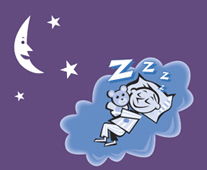Narcolepsy
Narcolepsy is a neurological disorder in which the brain is unable to regulate the correct times for sleeping and being awake.
This disease can cause overwhelming feelings of sleepiness at the most inopportune times throughout the day.
Overwhelming Daytime Drowsiness
Do you experience overwhelming drowsiness in the daytime?
Do you feel like you could easily take a nap at any point during the day?
Excessive sleepiness in the daytime is one of the first symptoms to manifest in narcoleptics.
Sudden Bouts of Sleep
People who suffer from narcolepsy often experience sudden sleep “attacks,” in which they fall asleep unexpectedly and at inopportune times, such as in the middle of an activity.
Narcoleptics may awaken a few minutes or a half hour after sleep attacks, feeling refreshed and unaware of what has occurred.
Decreased Muscle Tone
Also known as “cataplexy,” a sudden loss in muscle tone can be a sign of narcolepsy.
Cataplexy may be prompted by a sudden intense shift in emotions, and may only last for a few seconds or minutes.
It can show up in slurred speech and an overall weak feeling. Narcoleptics may experience cataplexy on a daily basis or only once or twice each year.
Sleep Paralysis
Sleep paralysis is characterized by a temporary inability to speak or move upon waking or falling asleep.
Sleep paralysis typically only lasts for a few minutes, but the experience can be frightening. Although sleep paralysis may be a symptom of narcolepsy, it is a fairly common disorder in general, often experienced by people in young adulthood.
Hallucinations
Narcoleptics may experience hypnagogic hallucinations, which occur during the transition into rapid eye movement (REM) sleep or upon waking.
These hallucinations are essentially dreams that occur when the person is semi-awake. Because of this lucid state, the person experiencing these hallucinations might mistake them for reality and become quite frightened.
Diagnosis
Judging by the way narcolepsy is portrayed in film and television, you might assume that it is relatively obvious when an individual has this condition.
However, narcolepsy is much more complex than common representations of the disorder, and it may not be immediately diagnosed. According to the Narcolepsy Network, about 1 in every 2,000 people have this disorder, and it can be identified through the following tests and observations.
Epworth Sleepiness Scale
The Epworth Sleepiness Scale is a standard test used to diagnose sleep disorders, and it is based on one’s personal perception of his or her sleep cycle.
The test presents several different situations and asks the patient to rate the likelihood of dozing off in these settings.
At the end of the test, higher scores indicate a greater chance that a sleep disorder is present.
If you take this test and end with a score higher than 10, you may need to undergo more involved sleep studies.
Sleep Studies
Overnight sleep studies are the only way for physicians to truly understand what is happening when you go to sleep at night.
These studies require patients to stay overnight at a sleep center where vital signs and brain activity can be measured as the patient sleeps.
When narcolepsy is suspected, REM cycle sleep will be the primary focus of the sleep study, as this is the aspect of the sleep cycle that tends to be abnormal in patients with this disorder.
Home Sleep Logs
In addition to an overnight sleep study, your doctor may want to see sleep logs that you have recorded at home.
These will provide a more complete picture of your nightly sleep schedule.
Narcolepsy Resources
Zeeba Sleep Center is one of the only accredited sleep clinics in Las Vegas, NV. We conduct sleep studies to diagnose and treat such sleep disorders as narcolepsy and restless leg syndrome.
To find out more, call today (702) 242-1562 or contact us online.
Zeeba Sleep Ceneter is accredited by the American Academy of Sleep Medicine and has board-certified sleep physicians providing comprehensive sleep diagnostic and treatment services.
American Academy of Sleep Medicine
3425 Cliff Shadows Pkwy, Las Vegas, NV 89129
Call Us Today (702) 242-1562
Copyright © 2025 Zeeba Sleep Center All rights reserved.
